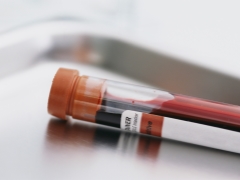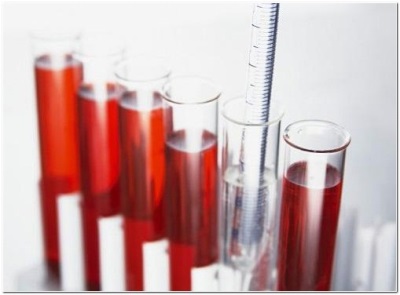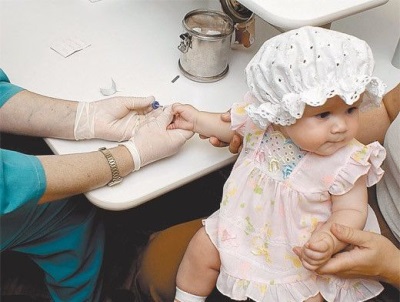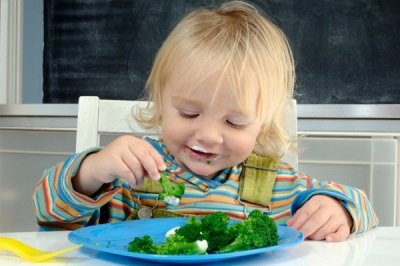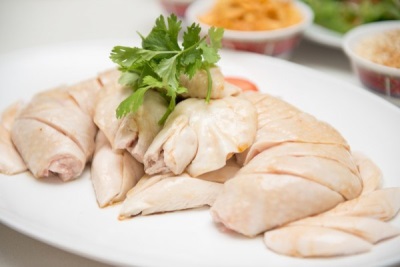High hemoglobin in a child
A blood test is one of the main examinations important for assessing a child’s health. Among its parameters, which help to identify diseases, there is also a level hemoglobin - the so-called protein involved in the transfer of oxygen and carbon dioxide in the blood of a child.
This complex protein, which contains iron, is found in red blood cells - red blood cells. A decrease in hemoglobin levels is known to most parents as a dangerous symptom, often arising from anemia. But is hemoglobin elevated, why can it be overestimated in a child’s blood and what to do when a higher indicator is found?
What hemoglobin is considered elevated
To know, reduced, normal or elevated hemoglobin in a child, you should be guided by the rules that will be different for each age. For example, an indicator for a child of 3 months may be within the normal range, and the same hemoglobin content in the blood of a child at 2 years or 12 years will already be significantly higher than the normal level.
The highest level of hemoglobin occurs immediately after birth, but during the first year of life, it gradually decreases.
The upper limit of normal hemoglobin are such indicators:
|
Have a newborn |
240 g / l |
|
On the fifth day of life |
200 g / l |
|
On the tenth day of life |
190 g / l |
|
Have baby in 1 month |
160 g / l |
|
In year |
130 g / l |
|
5 years and older |
140 g / l |
A slight excess of this indicator usually does not alarm the doctor, but if the hemoglobin level exceeds the limit of normal by 20-30 g / l, this situation requires a more detailed examination of the child.
The reasons
Not dangerous cause of elevated hemoglobin is living in a mountainous area or in the metropolis, as well as increased physical exertion. Pathological causes of higher hemoglobin than a child should normally have are:
- Diseases of the blood.
- Intestinal obstruction.
- Kidney disease, in which erythropoietin is produced in excess.
- Congenital heart disease, pulmonary fibrosis and pulmonary heart formation. With such pathologies, the formation of red blood cells is increased to compensate for the lack of oxygen.
- Serious burns. With extensive blood lesions in a child, the production of red blood cells temporarily increases and hemoglobin in the blood becomes higher. It helps deliver nutrients and oxygen to damaged tissues for faster healing.
- Vaquez-Osler disease, also called erythremia or polycythemia. With this pathology in the bone marrow, an excessive amount of blood cells, most of which are represented by red blood cells.The disease is more often diagnosed in adults, but it occurs in children, and its course in children is more severe. The exact cause of this disease has not yet been established. The disease is manifested by a red tint of the skin and mucous membranes, dilation and swelling of the veins, skin itching, pain in the fingers, fatigue, gingival bleeding and other symptoms.
- Other oncopathology.
In adolescence, an increase in hemoglobin levels can be triggered by smoking, frequent stress, and the use of anabolic steroids, if a teenager is involved in sports.
Symptoms
Many children with elevated hemoglobin have no symptoms of diseases, especially if the reason is not dangerous, for example, a violation of the drinking regime. If a higher hemoglobin is caused by dehydration at intestinal infection, the child will have nausea, diarrhea and other manifestations of intoxication and damage to the digestive tract.
In some babies, high hemoglobin is manifested by increased fatigue, impaired appetite, lethargy, drowsiness, increased blood pressure, headaches, and frequent bruising. If overestimated hemoglobin has caused disturbances in blood flow and blood clots, this can be manifested by cyanosis of the lips and fingertips, numbness of body parts, temporary loss of vision or hearing, and more serious symptoms.
The danger of elevated hemoglobin
What to do

Nutrition
If the hemoglobin levels are too high, parents will definitely be advised to pay attention to the child's diet. First of all, It is important to ensure that the baby gets enough fluids. This may be tea, pure water, juice, compote, jelly and other drinks. If we are talking about a baby receiving breast milk, the baby should be doused with water.
Foods rich in iron and fatty foods are excluded from the diet of a child with high hemoglobin. It is recommended for a while to abandon the liver and other by-products, buckwheat, pomegranates, red fruits and berries, beef and other red meat. If you give an apple an apple, it should not be cut and left until dark (so iron is more actively absorbed from its pulp).
Children's menu with increased hemoglobin is replenished with seafood, fish dishes, chicken (white meat), legumes, soy. These foods will prevent protein deficiencies and strengthen the vascular walls. The most preferred heat treatment is considered boiling, since with it the fats and some of the iron will break down and go to the decoction.
Remember that iron is absorbed with the help of vitamins C and group B; therefore, when a hemoglobin is detected in a child, you should not give the child a multivitamin complex in which they are present. If a baby with high hemoglobin is breastfed, all of these recommendations apply to the diet of a nursing mother.
Air humidification
Drug therapy
Sometimes medications that prevent blood clotting (for blood thinning) are used in treatment. However, the independent use of such drugs is unacceptable. Their doctor should be prescribed only by a doctor if there is evidence.
